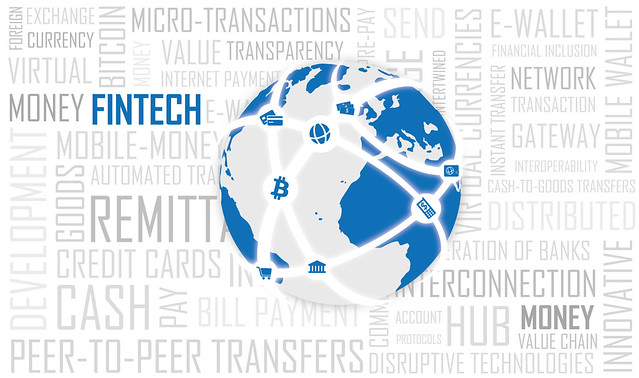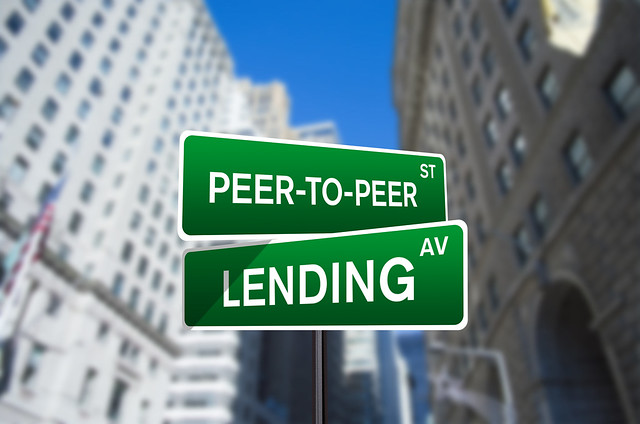Regulatory Environment
Disruptive Business Models
The major challenge of disruptive innovation is that existing markets and market-dominant practices
are socially and economically embedded within wider society. Hence disruptive innovation while
potentially creating new value for some also has the potential to drive adverse economic
consequences for firms and individuals linked to the previous system (Dorrell, 2018). For example in
the previously discussed Amazon Go scenario, a key question that is debated increasingly is whether
the cobots, AI and Industry 4.0, will supplement human labor and liberate workers from mundane tasks
and have humans focus more on tasks that demand executive skills, or conversely, supplant certain
types of professions and employees such as cashiers in retail stores, or those earning a living
driving taxis and trucks, who might potentially be replaced in the future by automated checkouts and
autonomous vehicles (Berger., 2018).
There are other IoT based innovations that are not accomplished by businesses but by users seeking
to satisfy their own needs, such as the real-time glucose monitor initially developed by a private
community of diabetes patients and developers. This kind of “free innovation” introduces another
type of a business model involving people who are not innovating for profits (Zhoudan Xie & Mark
Febrizio , 2018).
Historically, policymakers have tried to unsuccessfully “regulate” disruptive innovations in two
ways. The first seeks to preserve or protect existing practices through regulation, this approach
has been taken by some jurisdictions responding to ride-sharing platforms for instance the ban on
Uber in Queensland (Barnett & Barnett, 2016). These jurisdictions are those which previously had
strongly regulated or monopolized taxi industries and thus strong pressure from interest groups to
preserve existing markets. In many places where this regulatory approach was first attempted,
governments have been forced to relent and change the approach after failing to achieve meaningful
compliance (Department of Transport and Main Roads, 2018).
The second approach is equally ineffective and driven by market logic it favors allowing disruption
to alter markets with little regulatory oversight (Lepore, 2014). The reasoning here is that
disruptive innovation represents a form of progress and thus is inevitable (Lepore, 2014). From this
perspective those who suffer the economic ‘collateral damage’ are simply an unfortunate consequence
of the survival of the fittest in a competitive market and should seek to adapt to the new markets
or find employment in other sectors.
There is a reasonable argument that certain forms of disruptive change are inevitable or at least
impossible to prevent once on the market, hence protectionist responses are unlikely to be
effective. Instead regulators should acknowledge the potentially corrosive impacts of disruptive
innovation and take a transitionary perspective towards existing markets (and individuals) likely to
be affected. Thus, the middle ground approach must consist of three aspects:
-
Preserving and enforcing the public good aspects of existing regulation (e.g. taxation, employee
rights, health & safety).
-
Recognizing that disruptive innovation is happening and encouraging it in an orderly and
well-regulated way.
-
Recognizing that disruptive innovation creates ‘collateral damage’ and that unchecked, this can
be highly societally corrosive. This can be responded to by a transitionary approach in affected
sectors.
When it comes to regulators adopting and using IoT for delivery of services to businesses, while the
value proposition of IoT for government to business services is evident the business model is
unclear. The business models for IoT within the government to business space aren’t fully
established. There are significantly higher number of applications being developed and implemented
particularly in areas such as Smart Cities where IoT is being projected as a competitiveness
differentiator to create an attractive and competitive economy. These are typically more relevant in
the government to consumer/public domain where cities for example deliver services directly to
citizens. In most of these cases, city governments invest in the technologies and, in some
instances, engage the private sector to participate in the delivery. However, there are limited
applications and mostly in the pilot stages where IoT is being used as a means to improve regulatory
compliance while reducing burden on businesses largely due to a lack of clarity on the business
models and regulatory motivation (World Bank, 2017).
Ethics and Equity
Social behavior and appropriate use become even more crucial in an increasingly interconnected
environment created by IoT that links devices, systems, data, and people. At its best, the IoT has
the potential to create an integrated ecosystem that can respond to a spectrum of needs, increasing
efficiency and opportunity and empowering people through technology, and technology through
intelligence. At its worst, the IoT can open a Pandora’s Box of inappropriate and unsafe behavior,
unintended consequences, and intrusiveness (Berman, 2017).
Research that evaluated case studies ranging from a smartphone and an activity tracker (Fitbit) to
an intelligent personal assistant (Alexa, Siri), a chatbot (Microsoft’s Tay), a self-driving car
(Tesla, Google-Waymo) to a self-service checkout showed that “things” informed by algorithms and/ or
AI gain new skills they have not had before. With this, they acquire a new form of agency, new ways
to act and to make decisions (Bunz, 2018). Examples of suggested near future technologies are the
use of AI powered IoT systems in surgery or the deployment of AI in military contexts (known as
Lethal Autonomous Weapons Systems (LAWS)).
The major socio-ethical questions surrounding AI is of autonomy. As machines become more competent
(at their particular task) the need for human input decreases to the point where the machine may be
considered to be acting autonomously or making autonomous decisions. There are a set of related
questions that must be asked when considering machine autonomy:
-
Should machines be allowed to make autonomous decisions?
-
If machines do make autonomous decisions what sorts of things can machines decide?
-
Who is responsible (legally, ethically, socially, financially) for the outcomes of a machine’s
decision?
-
What level of human review or oversight is necessary when a machine makes an autonomous
decision?
These questions are important to consider and naturally will relate differently to different AI
applications. For example, the impacts of poor decisions made by an intelligent toaster are unlikely
to be catastrophic. However, poor decisions by autonomous vehicles could be lethal. Thus, there are
a number of other factors which have to be considered in responding to each of these questions, such
as the reversibility of the decision, and seriousness of the consequences should the machine make
the wrong decision.
Furthermore, as AI systems develop increasing autonomy there is the potential for errors to occur on
a semi-regular basis. When the results remain non-catastrophic it has the potential to create a
situation known as ‘normalization of deviance’. In this situation, errors which do not lead to
adverse consequences become redefined from being problems to acceptable operating risks despite
being outside of design specifications. As these errors continue to occur they eventually may lead
to catastrophic outcomes which were foreseeable but not corrected due to habituation towards the
errors (Vaughn, 2016). In the case of AI, it is important to remain aware of this potential as there
will be errors in the early stages at least and in the absence of catastrophes, complacency may
quickly set in.
Another well documented risk associated with AI is the potential for algorithms used in machine
decision making to reflect human biases (such as racism or sexism) due to these biases in the data
inputs. This presents the danger of ‘objective’ decisions not really being objective and thus AI
could perpetuate human inequalities. This risk has been extensively covered in literature (Buchanan
& Miller, 2017).
The complexity and breadth of the topic means that the gaps in knowledge and governance of AI are
many. Nonetheless, the key task from a policy perspective will be regulating autonomy in a manner
that integrates the scientific, philosophical, and disciplinary research on AI into a more general
approach to the regulation and governance of autonomy. Bridging the science and regulation of AI is
a complex task. For example, a small change in AI behavior from a technical perspective may
represent a radical change from a regulatory or social perspective. The change in autonomy is
significant and so are the social and regulatory implications. Because of the complexity of the
scientific, philosophical, and sociopolitical/legal issues around AI, it is imperative to develop a
more general policy perspective integrating these various insights.
Connected devices have the extraordinary potential to improve the health, economic, and personal
welfare of underserved communities. Wearable devices, for example, can closely monitor a patient’s
health, which is critical for certain illnesses. Heath care providers can do this remotely, which
helps rural patients or patients with mobility problems. While IoT has the ability to improve the
lives of consumers and citizens, a lack of access to the Internet, and thus many IoT applications,
could also make things worse for underserved communities. If policymakers do not implement policies
to encourage equitable deployment, the Internet of Things could exacerbate existing inequalities by
providing the benefits of data-driven decision making only to some and placing already underserved
communities at an even greater disadvantage (Department of Commerce, 2017).
Technology Standardization, Interoperability and Access
IoT tools and technologies are now cheaper, faster, and more easily available than ever before. As
the technologies continues to evolve, there continues to be some underlying challenges with
potential policy implication where governments can play a proactive and positive role (World Bank,
2017):
-
Network coverage: The required mobile and wireless networks should provide continuous coverage,
stable, and reliable connectivity despite the huge demand coming from increased device
connections. Limited coverage is often the cause for reduced benefits from IoT applications.
-
Power consumption: IoT applications depend on devices that operate using electrical energy. Low
power consumption is therefore very important to facilitate continuous operation of these
devices. Newer IoT devices and applications have begun to explore and exploit energy harvesting
techniques to achieve long-term operation of battery-powered IoT devices.
-
Privacy and security: IoT devices may suffer from privacy and security vulnerabilities. Existing
solutions often are not sufficient to address these challenges.
-
Interoperability/standards: Different IoT systems should coexist without affecting each other.
There are, however, only limited wireless standards available to address the connectivity and
interoperability of the huge amount of different IoT devices being deployed.
-
Market Readiness: The lack of market readiness may be one of the biggest barriers in
commercializing IoT products and services. Applications that do not require or expect government
intervention, such as in Industry 4.0, have been widely adopted. By contrast, despite the
innovative IoT technologies being produced, the IoT market remains underdeveloped and unready at
scale when government partnership or action is needed or inevitable.
-
Reliability: The typical consumer electronics life cycle of 2-4 years is not feasible for
large-scale IoT. The costs and logistics of updating/redeploying any pieces of an IoT system
every 2-4 years can potentially outweigh the value for all stakeholders. Any IoT solution should
have a clear annual maintenance contract (AMC) in place to support the devices and services over
the lifetime of the system. An AMC will incentivize the system provider to provide devices that
will be able to withstand external conditions, their sensors remaining calibrated to ensure
proper measurements.
-
Monopoly Characteristics: Dependence on wireless networks presents typical characteristics of a
natural monopoly such as high entry and sunk costs, large initial infrastructure investments,
supply-side economies of scale, a limited number of suppliers, market power, concentrated
competition, and marginal costs tending to zero especially in jurisdictions with existing
monopolies for telecom utilities.
Data Privacy & Security
A defining characteristic of the IoT is pervasive, often opaque collection and seamless linkage of
user data to provide personalized experiences (Wachter, 2018). To enable this functionality, IoT
devices and services must be connected and share data about users’ interactions with multiple nodes
in the network. Consistent identification of users and devices across the network is likewise
necessary.
These features of the IoT, which create numerous privacy risks, are frequently designed to go
unnoticed by users in order to provide a ‘seamless’ experience. For example, the placement of
sensors in clothing materials facilitated by advances in nanotechnology opens the door to monitoring
information on an individuals' location and possibly some vital signs. The use of wearables for
monitoring health status become more accepted, it could result in the collection of large-scale data
on individuals' health status (Costigan, 2016; Bannerjee, 2018). The impossibility of anonymizing
data, weak cybersecurity standards, and the opaque operation of many IoT devices and services
further exacerbate these privacy risks, and users’ awareness of them. A fundamental tension exists
between the seamless and nontransparent nature of the IoT, and the need to keep users informed and
in control of collection and processing of their personal data to protect against privacy threats.
Security implications are likely to arise from IoT based applications due to the typical lack of
security functions in the majority of sensors and actuators that make up the backbone of the IoT
(Costigan, 2016). Specifically, as companies push out more minimally viable products in a rush to
meet demand, low-cost sensors and actuators for data collection, monitoring, and process
optimization will remain unlikely to have properly embedded security functions within them.
Moreover, sensors tend to suffer from limited memory capability and computational power, further
diminishing opportunities to produce IoT devices with appropriate security protocols (which
frequently is not a primordial goal in the mind of developers). This inherent weakness in IoT
translates into possible societal vulnerabilities as devices across sectors ranging from health to
agriculture can be compromised.
An extreme example of poor data privacy is the social credit system currently being piloted in the
People’s Republic of China. Under this system a vast range of behaviors both criminal and
non-criminal may affect an individual’s social credit score, like a credit score, and this in turn
impacts a range of outcomes from educational and job prospects to loan terms (Hoffman, 2018). This
is an extreme case however it is both a clear affront to liberal democratic values and a potential
warning of the socially destructive potential of data-driven smart cities.
Although the use of data for social engineering may appear positive to some, historical cases of
surveillance-based societies clearly show that any public goods are offset by poor outcomes for
citizens living under such a regime (Lichter, et al., 2015). Such systems have the potential to
exacerbate existing inequities, for instance insurers in some states may deny insurance to those
seen as high-risk. The social inequity effects of such market driven systems are already well
documented in some places such as the United States and if the use of private data in making
these determinations is not regulated to protect the vulnerable then this outcome may become
more widespread.
The second concern regarding security is that even if private data is used in a responsible way
it will create a vast data bank of sensitive personal information. Poor security practices may
then allow actors with illegal or otherwise nefarious intentions to access this data placing
citizens at risk of adverse outcomes. The risk is not only from third-party actors seeking to
access a restricted system but also (or even more so) from those with legitimate access who may
misuse the data (Hutchings & Jorna, 2015). Thus, solving the security problem is not simply a
question of cybersecurity but also of regulatory and governance practices within organizations
using data.




